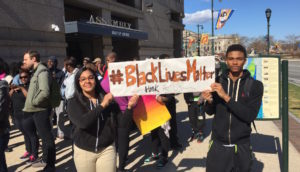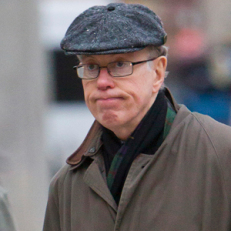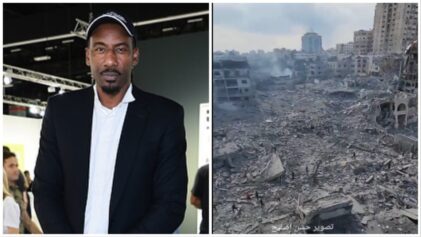
Photo by Brett Klein for Philly Magazine
A New York judge has accused the Black Lives Matter movement of ignoring inner-city violence.
According to The New York Post, Justice Edward McLaughlin said the high incidence of so called Black-on-Black violence in neighborhoods like Harlem shows that Black people don’t really care about the loss of life. He made the statement while sentencing felon Tarek Arnold to 24-26 years in jail for attempted murder.
“Black lives matter,” said McLaughlin during Arnold’s sentencing in a Manhattan courtoom. “I have heard it, I know it, but the sad fact is in this courtroom, so often what happens is manifestations of the fact that Black lives don’t matter to Black people with guns.”
Arnold was convicted for shooting Jamal McCaskill four times in 2015. McCaskill survived.
The New York Post said McLaughlin has been a strong critic of urban violence. He has decried the Black community’s lack of action.
“Only Harlem can save Harlem,” he said in a 2011 interview. “If Harlem’s leaders are at all sick of ‘the pools of blood on the block,’ they must mobilize their neighbors to find and get rid of the guns in their homes.”
McLaughlin’s argument is the same criticism of the Black Lives Matter movement often made by right-wing commentators. After the death of Trayvon Martin in 2012, Juan Williams, a FOX News commentator, wrote in The Wall Street Journal:
“Nationally, nearly half of all murder victims are black. And the overwhelming majority of those black people are killed by other black people. Where is the march for them?”
However this criticism is inaccurate. Black people who live in cities plagued by violence have been very vocal about their situation. Black activists in Chicago, New York and Newark have all staged protests and marches calling for the government to take action on urban violence.
“In the last four years, Blacks have held community protests against violence in Chicago; New York; Newark, New Jersey; Pittsburgh; Saginaw, Michigan; and Gary, Indiana,” said Jamelle Bouie, a writer for Slate. “Indeed, there’s a whole catalog of movies, albums, and sermons from a generation of directors, musicians, and religious leaders, each urging peace and order. You may not have noticed black protests against crime and violence, but that doesn’t mean they haven’t happened.”
A good example of this is Spike Lee’s latest movie, Chiraq, which focuses on gang violence in Chicago.

Justice Edward McLaughlin leaves a Manhattan court building in 2015. (Chad Rachman’/NY Post)
The Black Lives Matter movement criticizes police violence against Black people. Mainly, white police officers are quick to shoot even unarmed Black people, but white armed people who commit acts of violence are somehow taken alive. For example, most of the anti-government protesters who staged an armed occupation of a wildlife reserve in Burns, Oregon were taken alive. Lavoy Finicum, the only protester killed, was given multiple chances to surrender and was only shot after he twice reached for his gun. On the other hand, young Black men like Laquan McDonald and Tamir Rice were quickly gunned down by the police and not even given the chance to surrender. Black Lives Matter has addressed this issue in an article on its website.
“The Black Lives Matter movement acknowledges the crime problem, but it refuses to locate that crime problem as a problem of black pathology,” according to the article. “Black people are not inherently more violent or more prone to crime than other groups. But black people are disproportionately poorer, more likely to be targeted by police and arrested, and more likely to attend poor or failing schools. All of these social indicators place one at greater risk for being either a victim or a perpetrator of violent crime. To reduce violent crime, we must fight to change systems, rather than demonizing people.”

